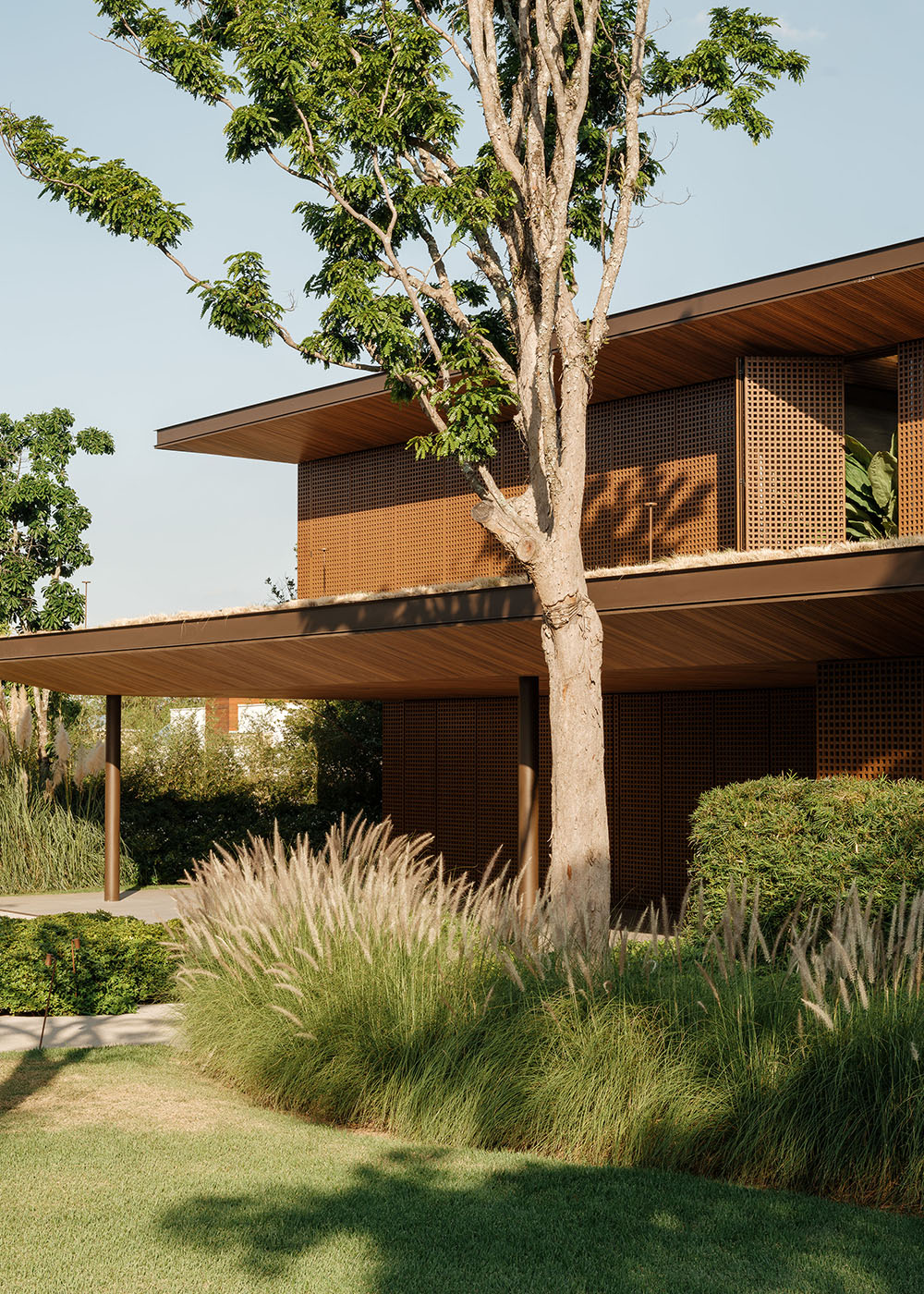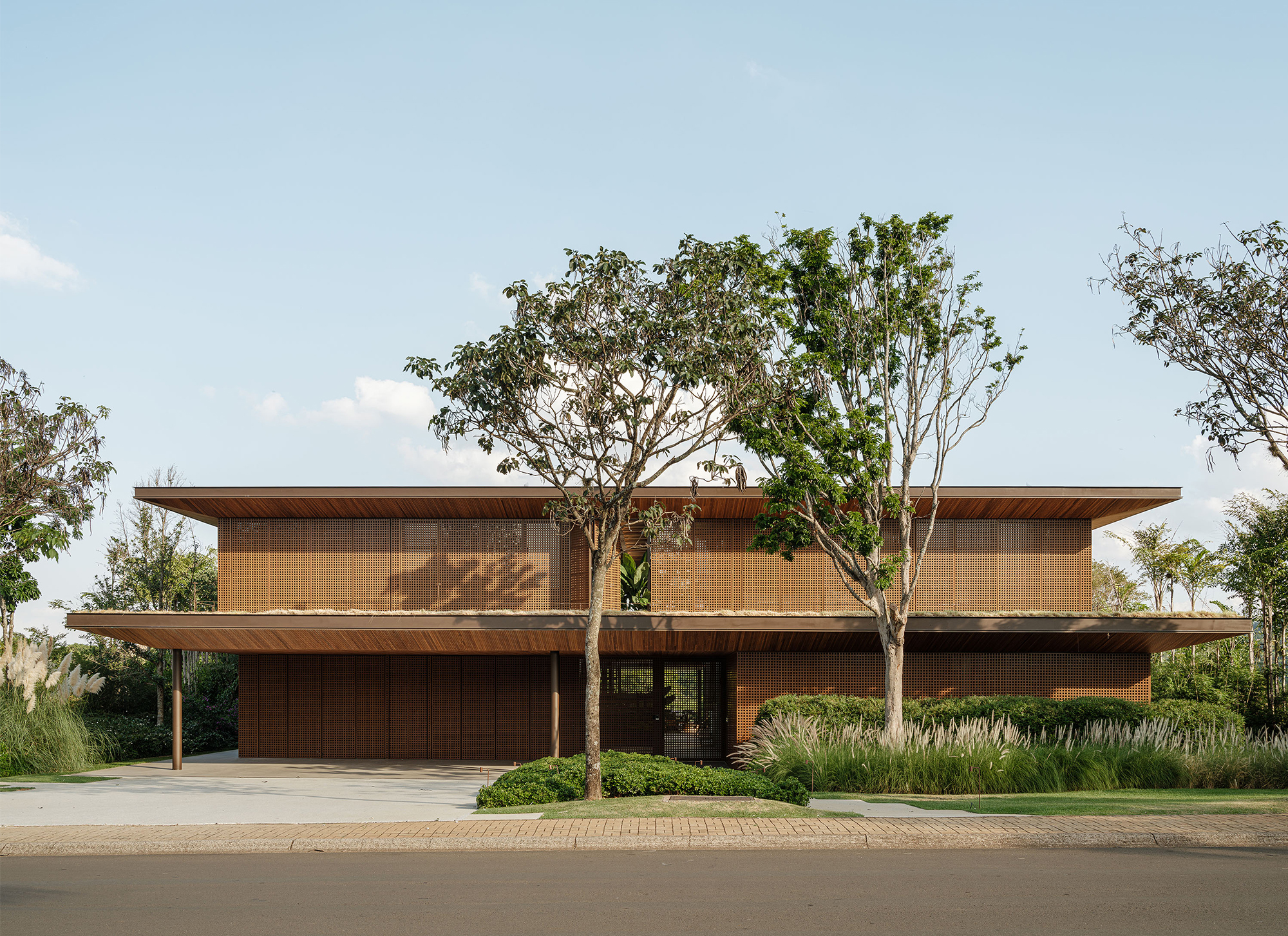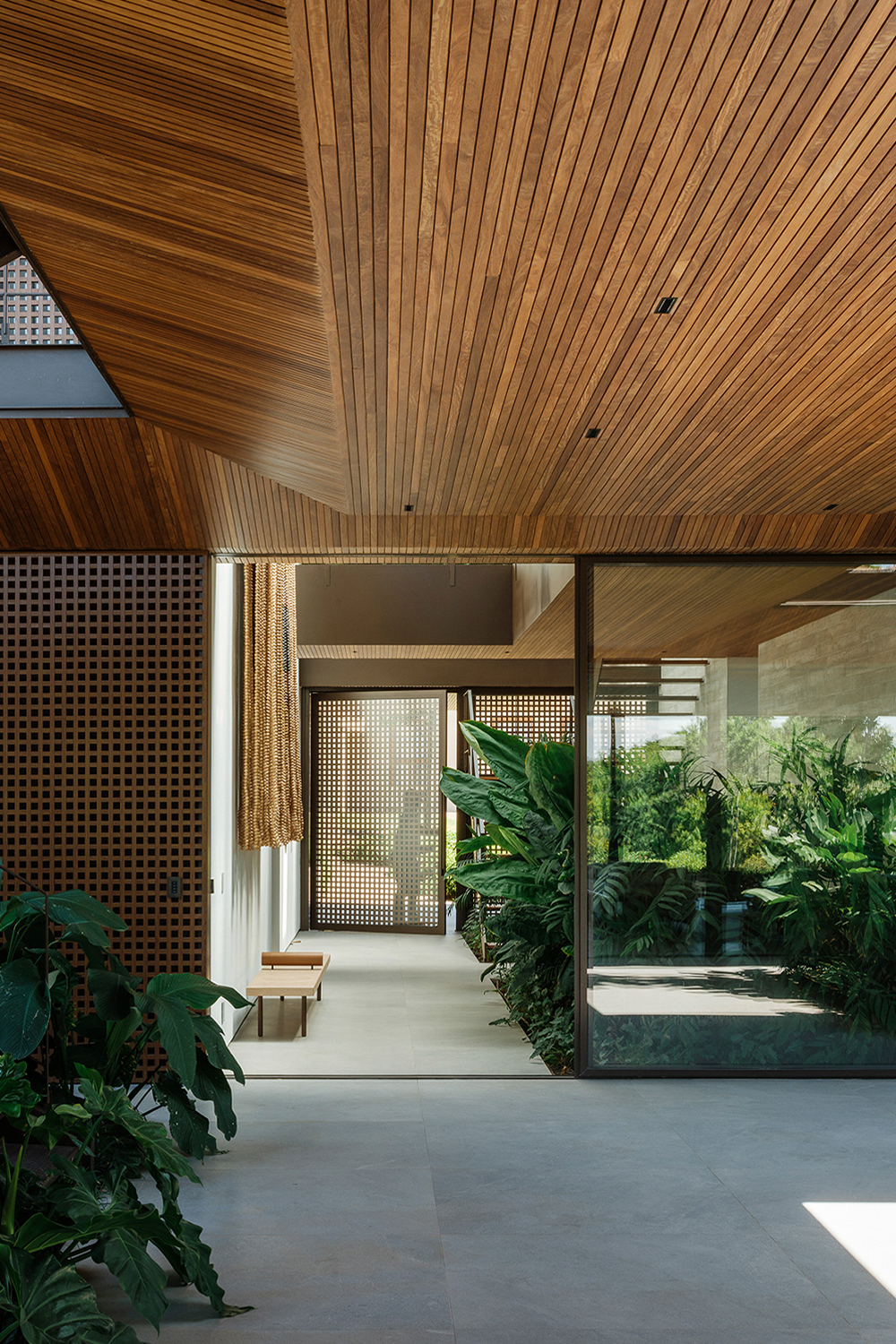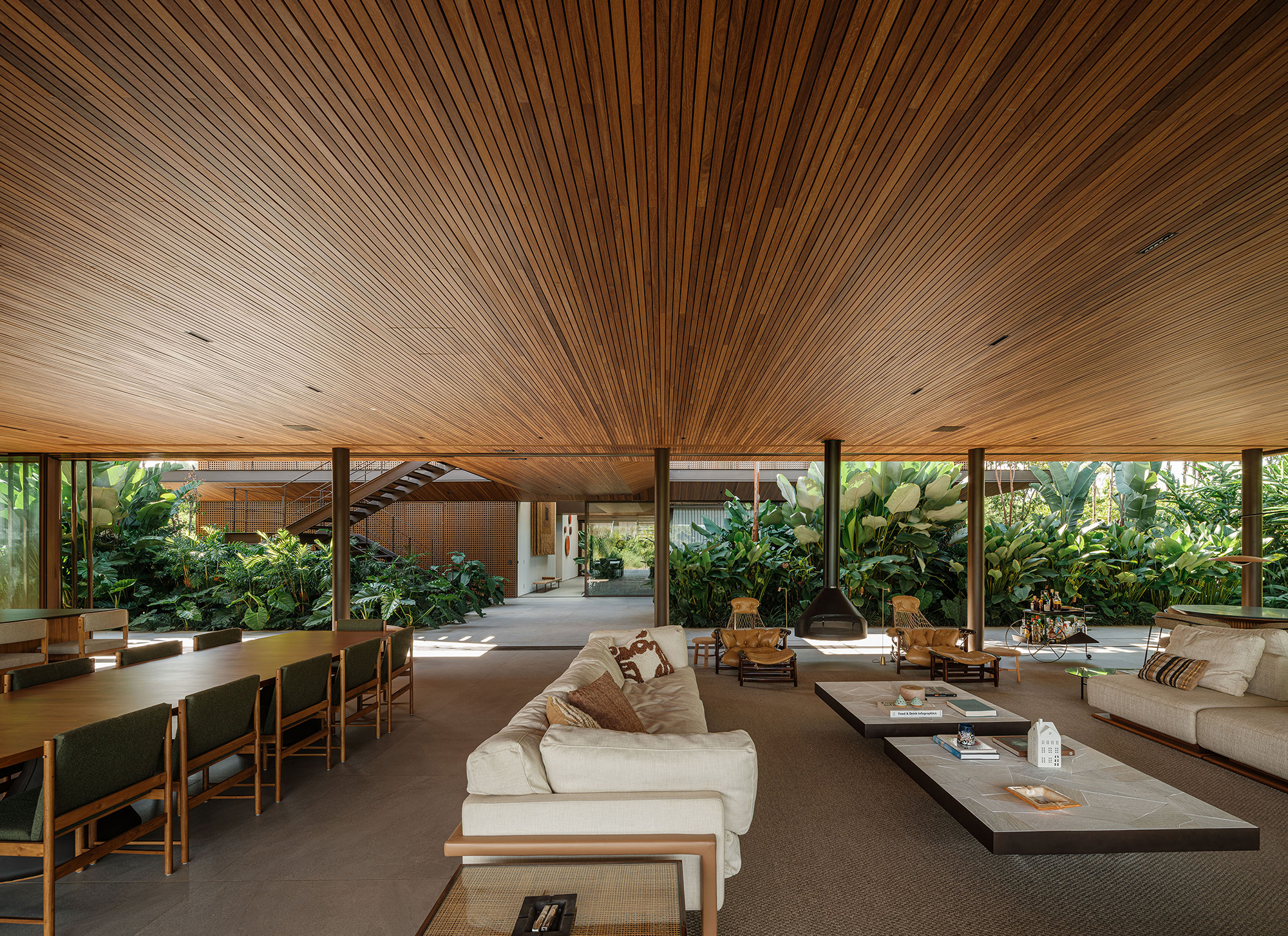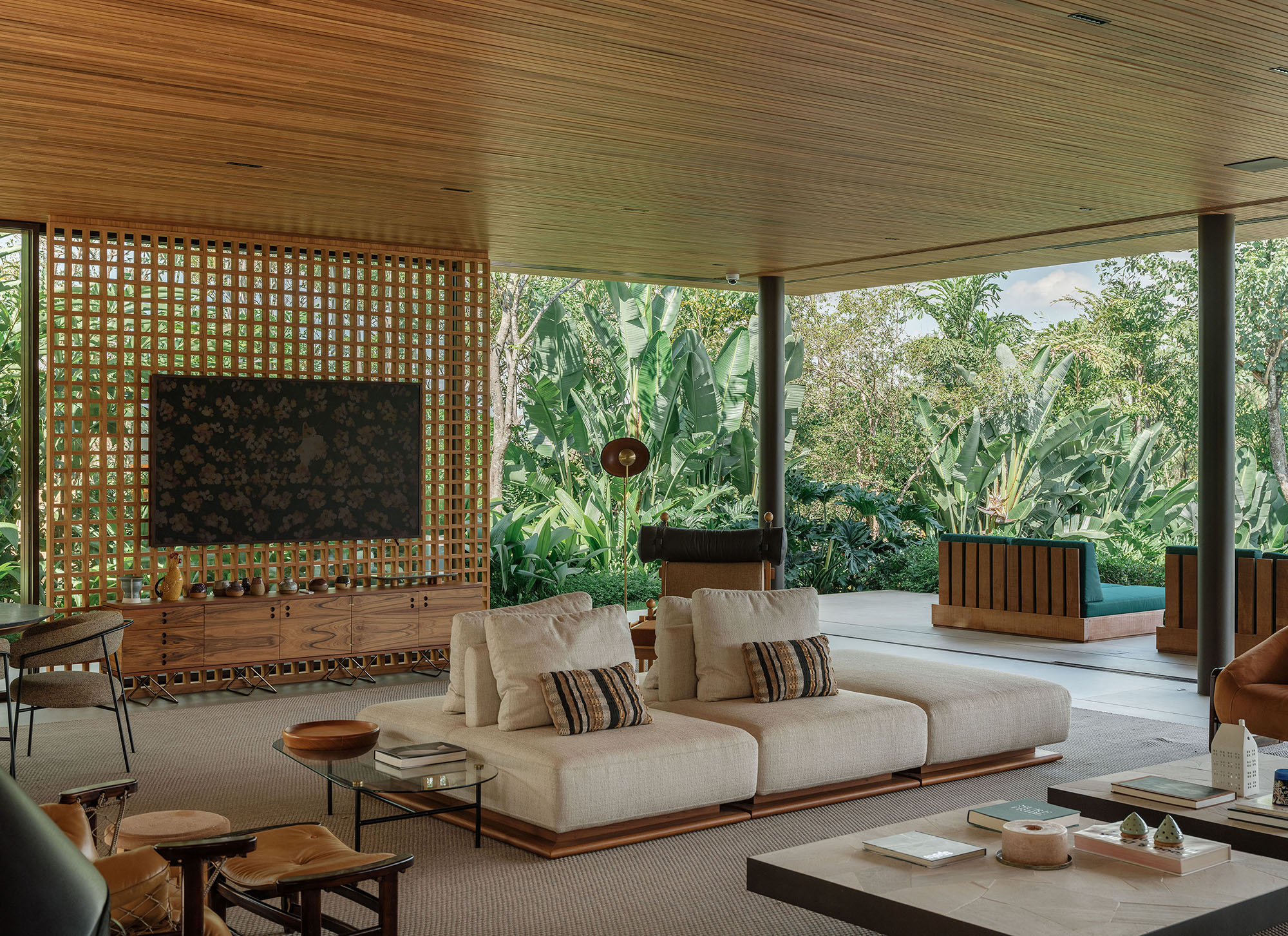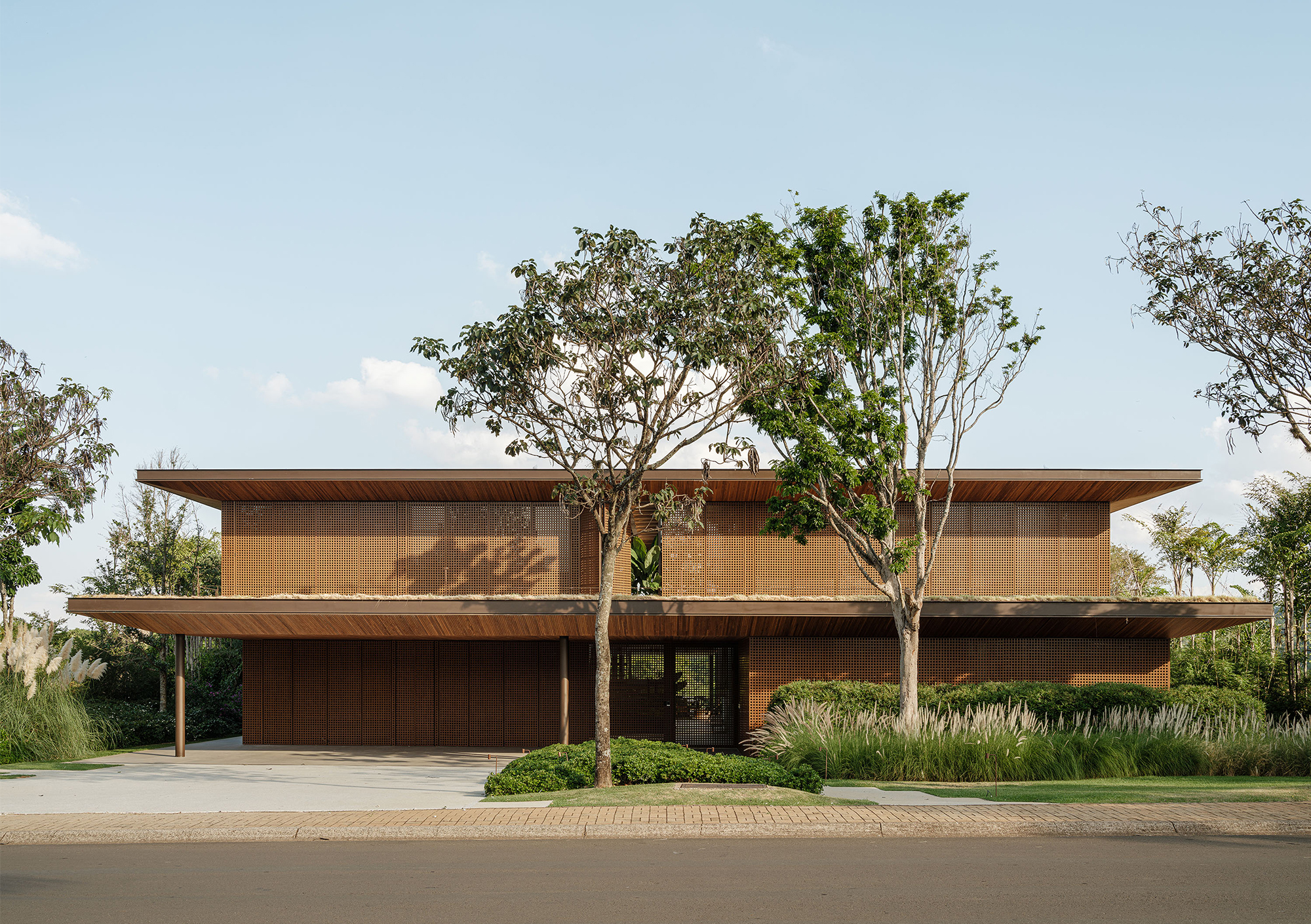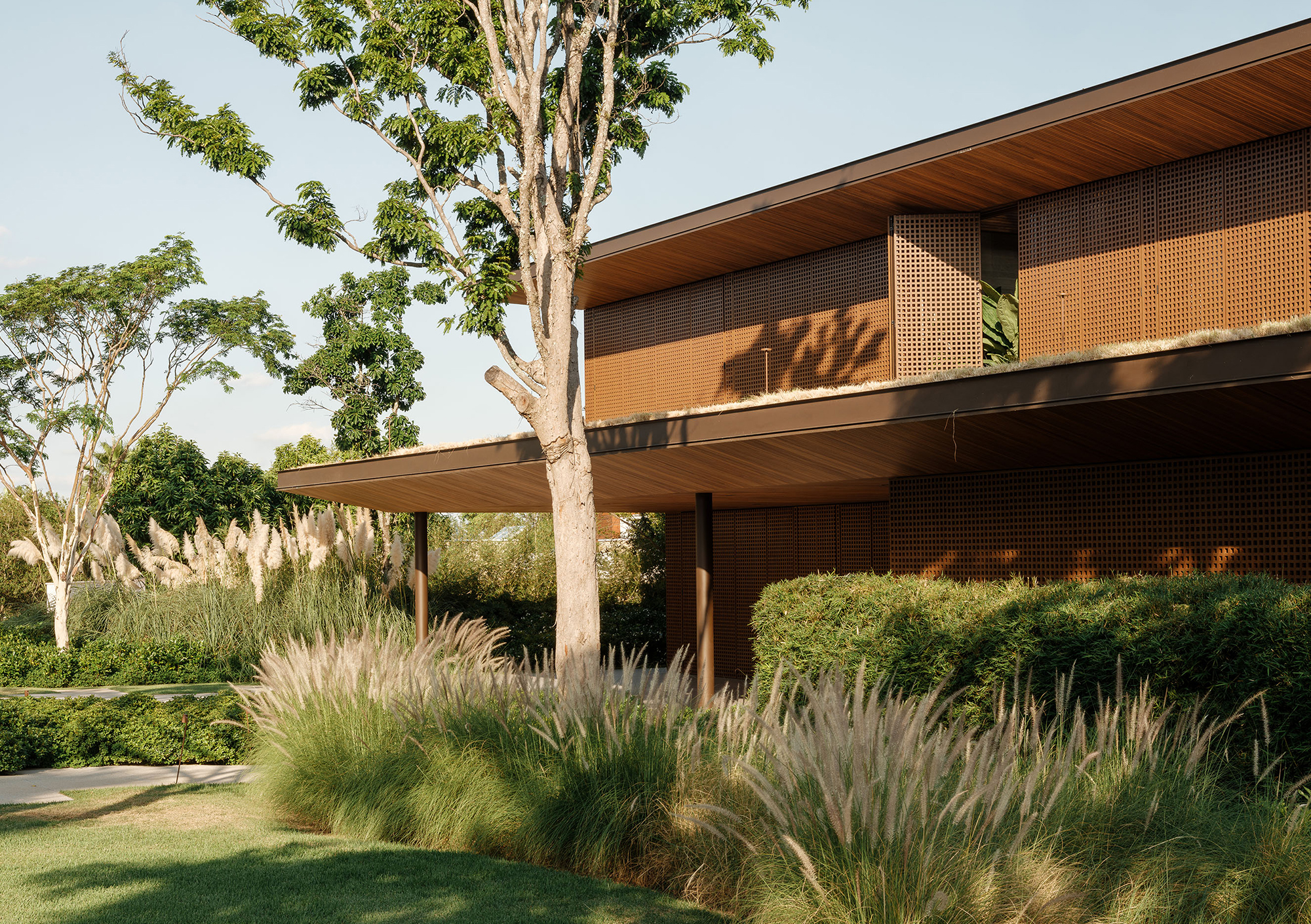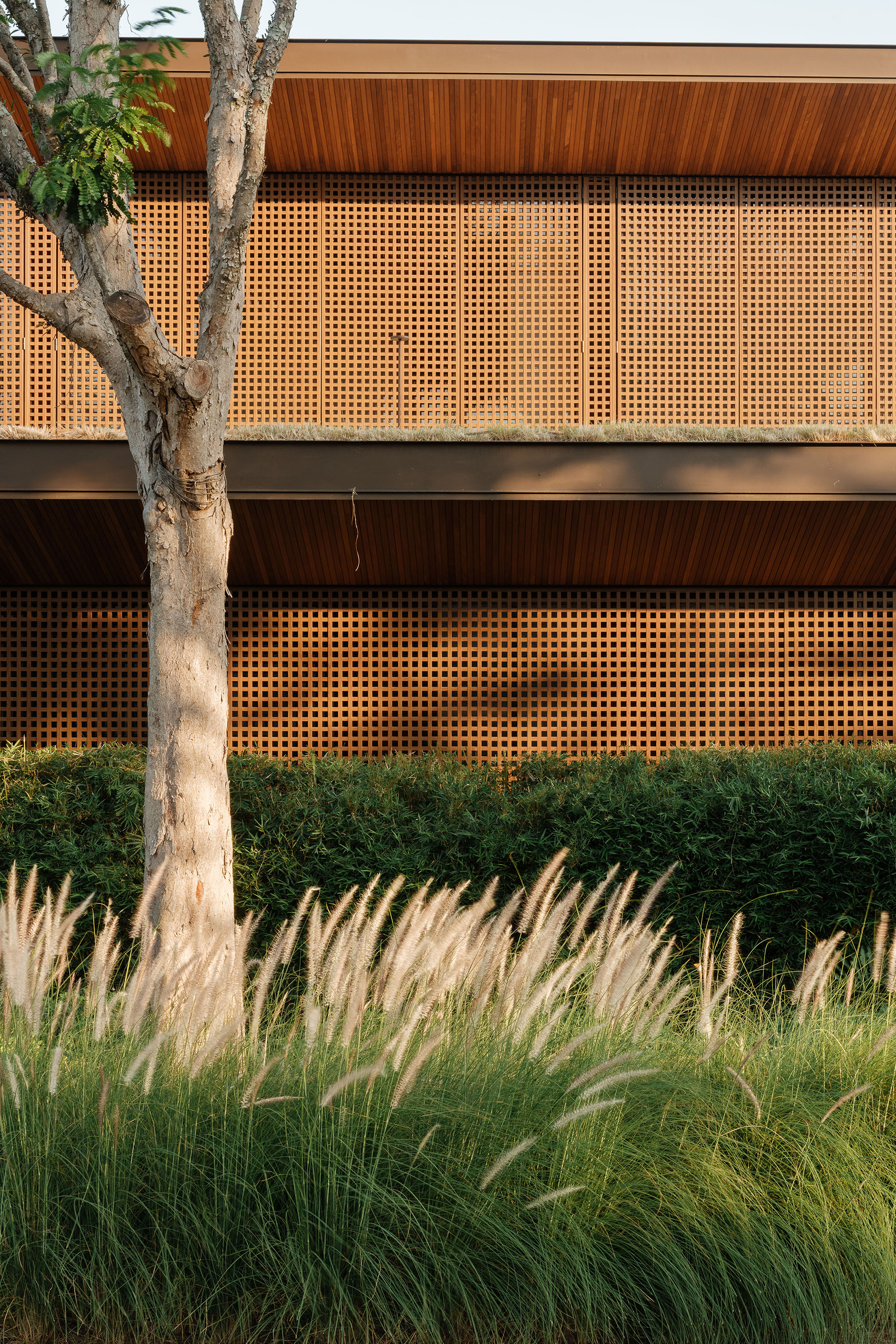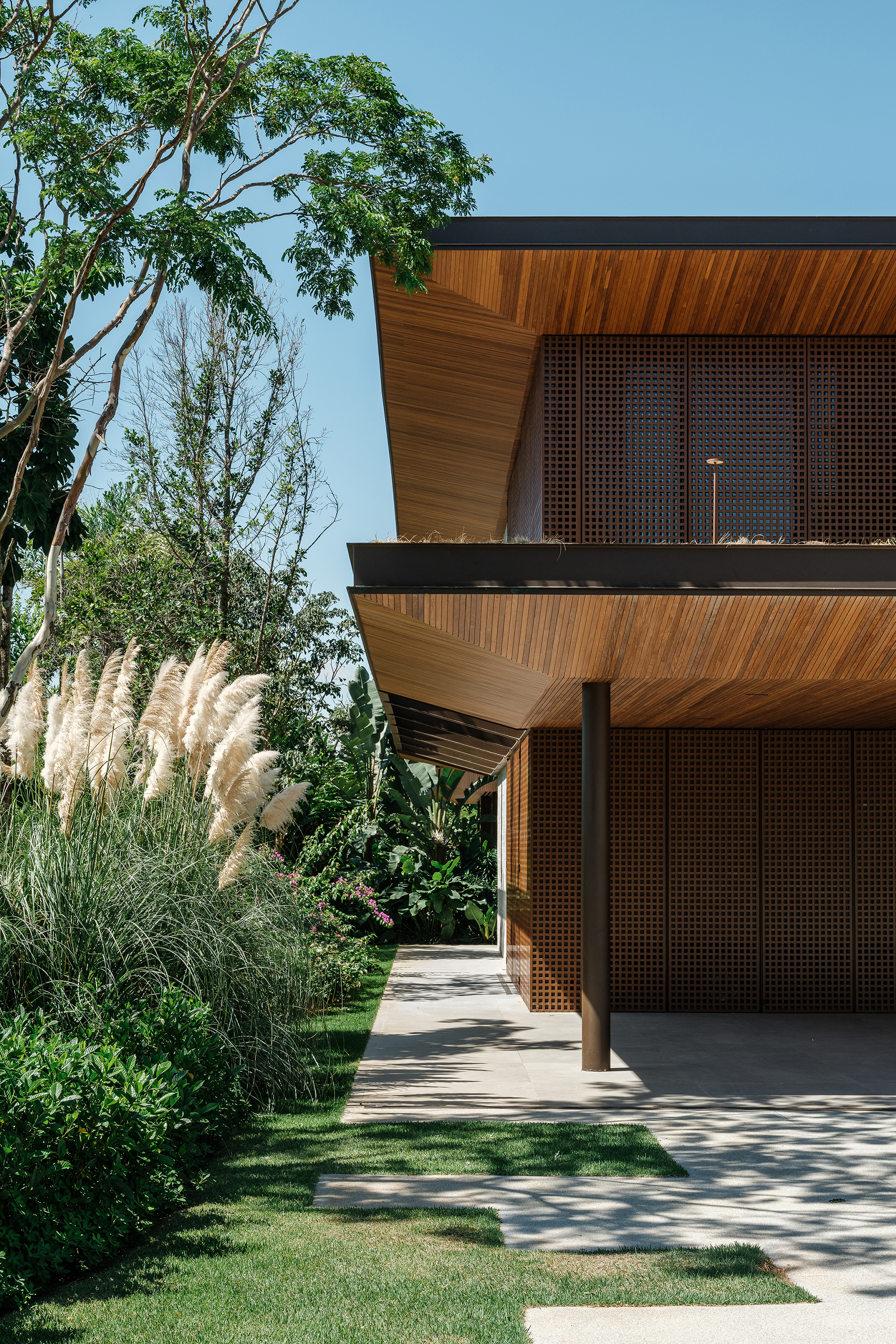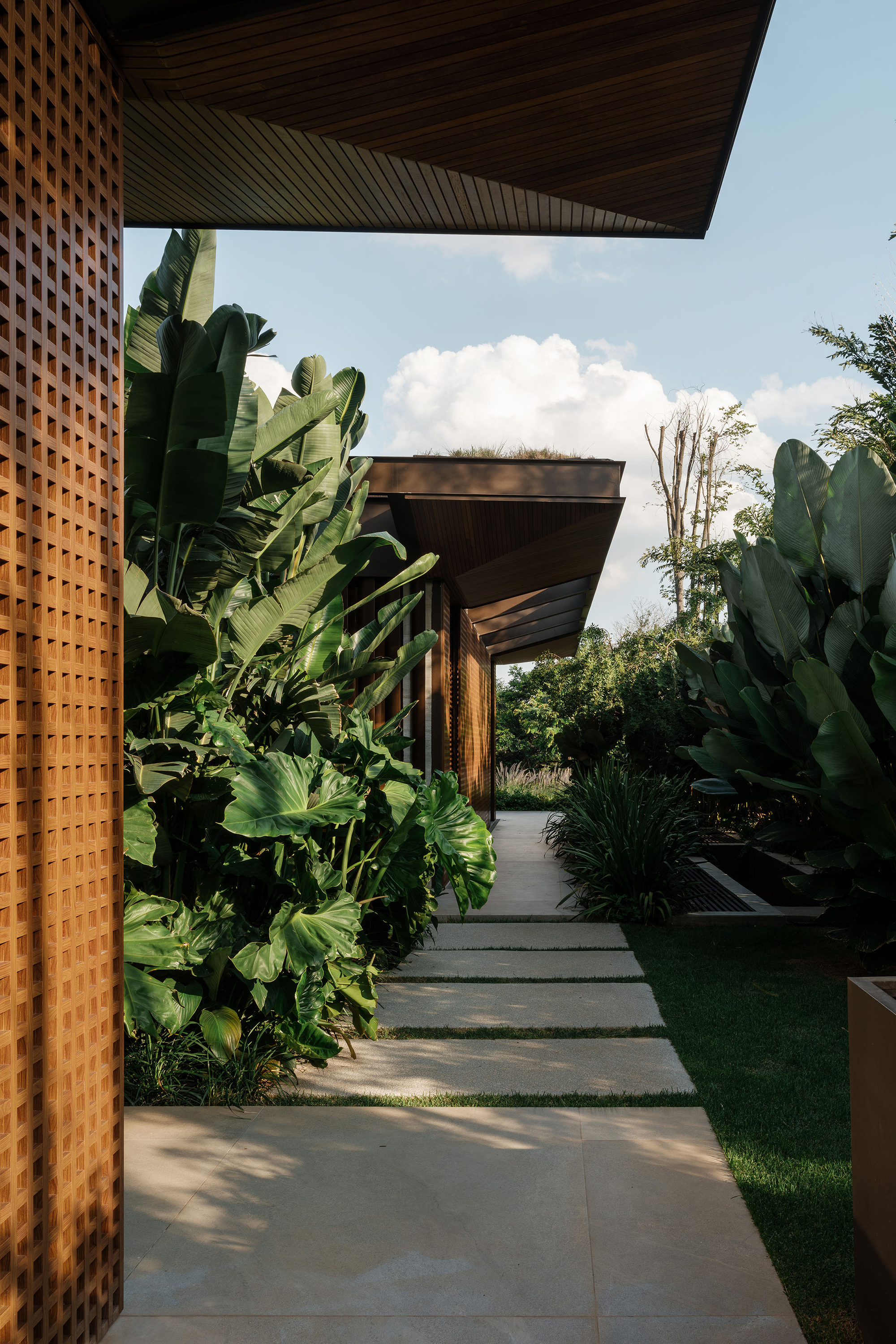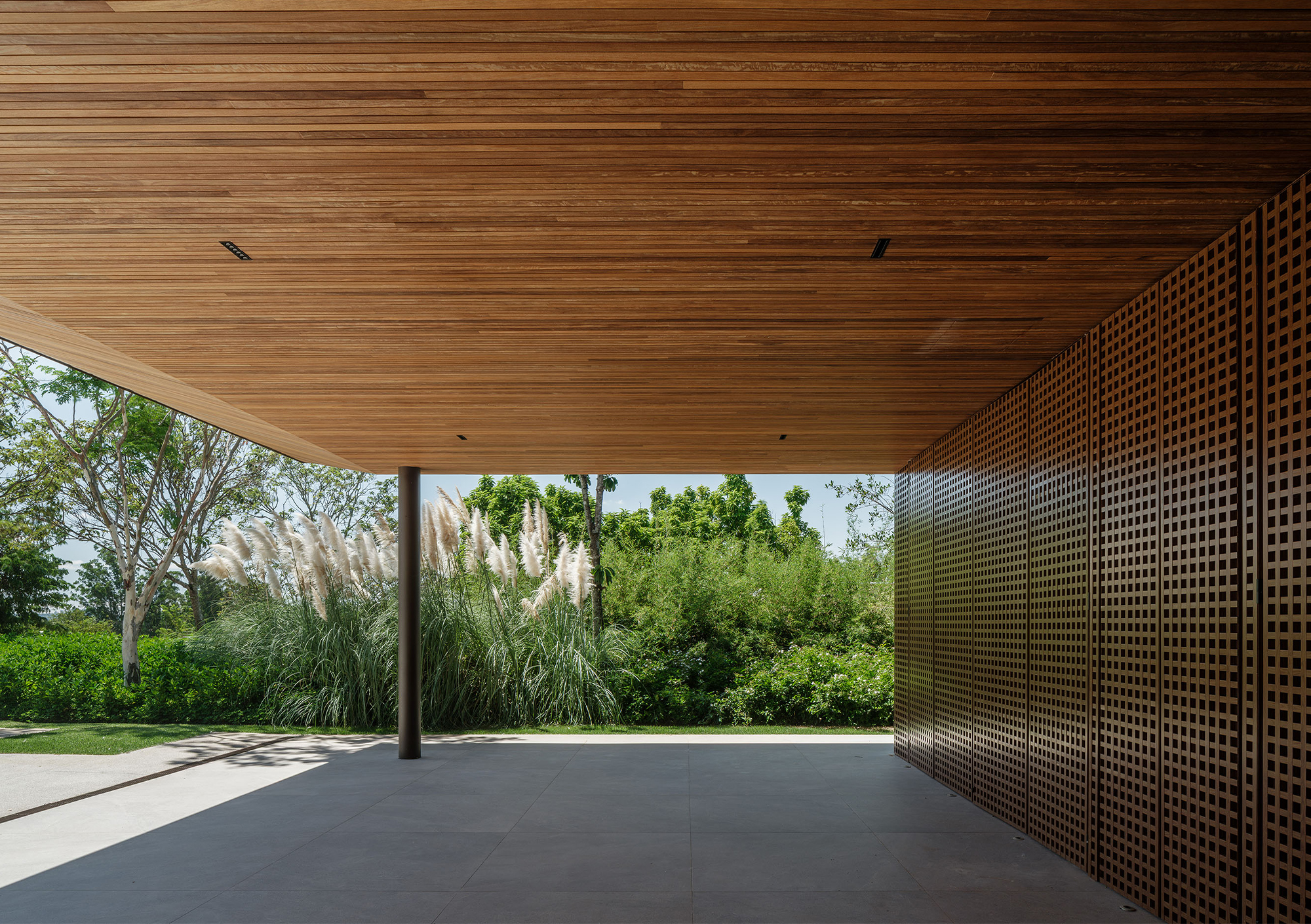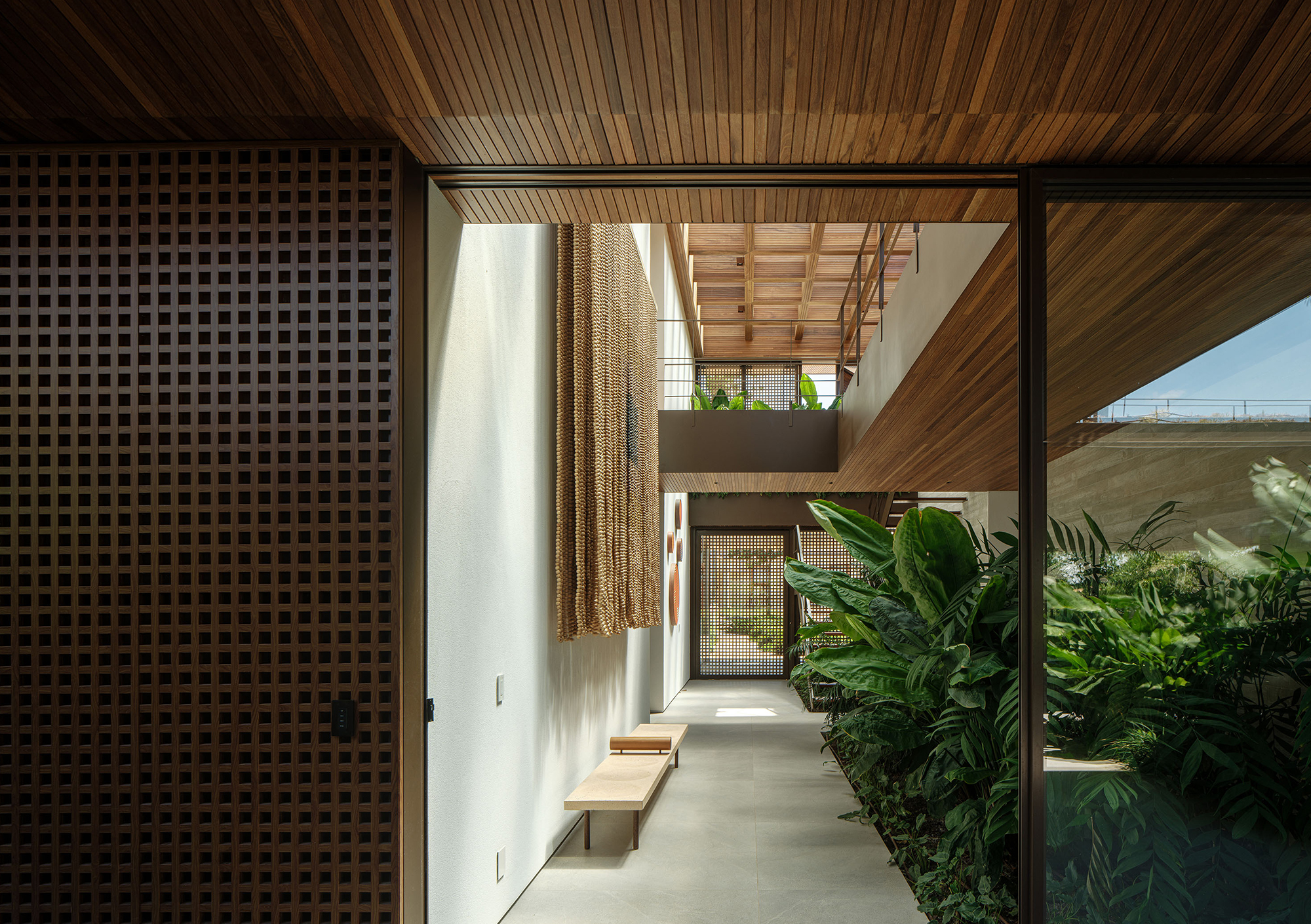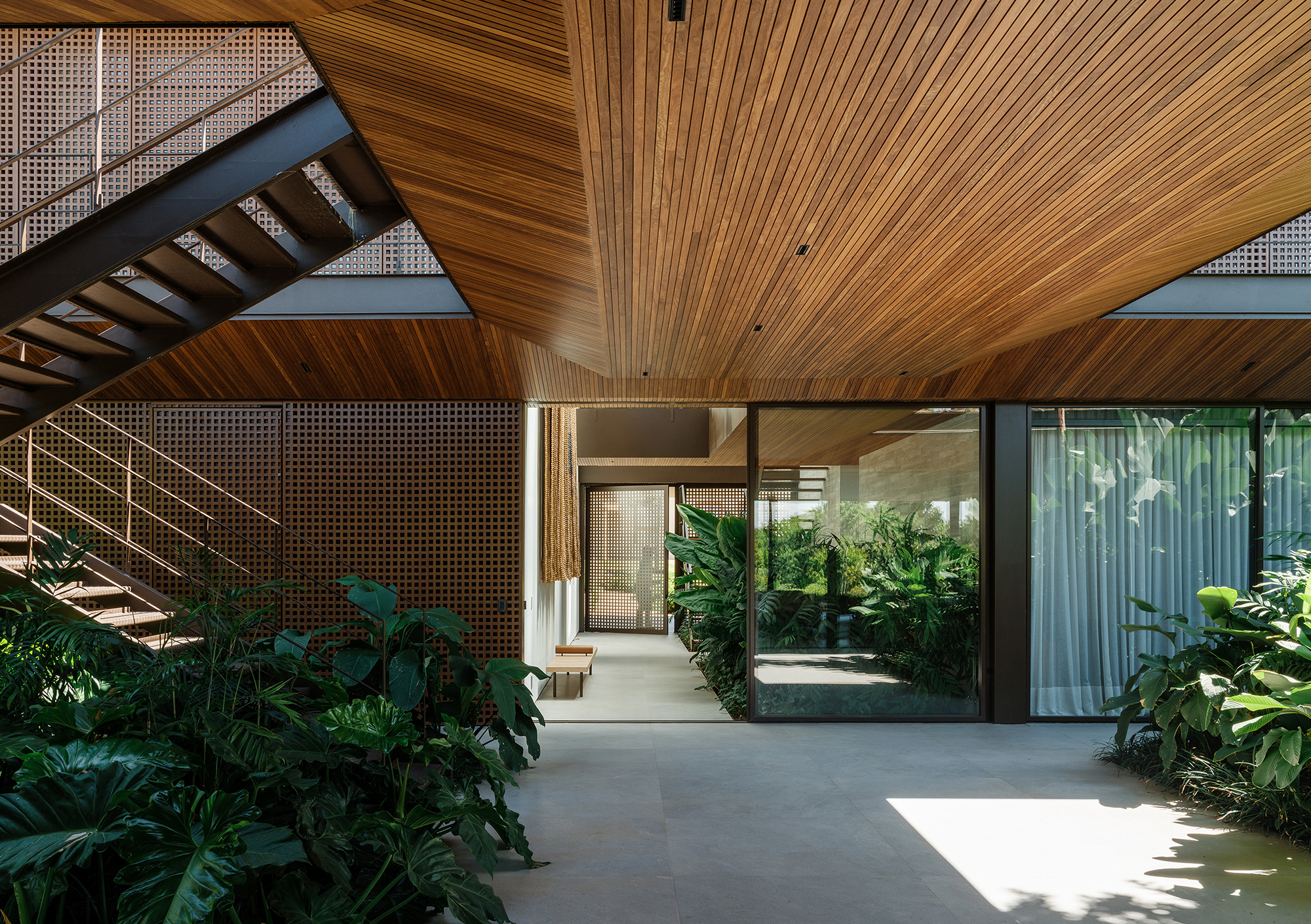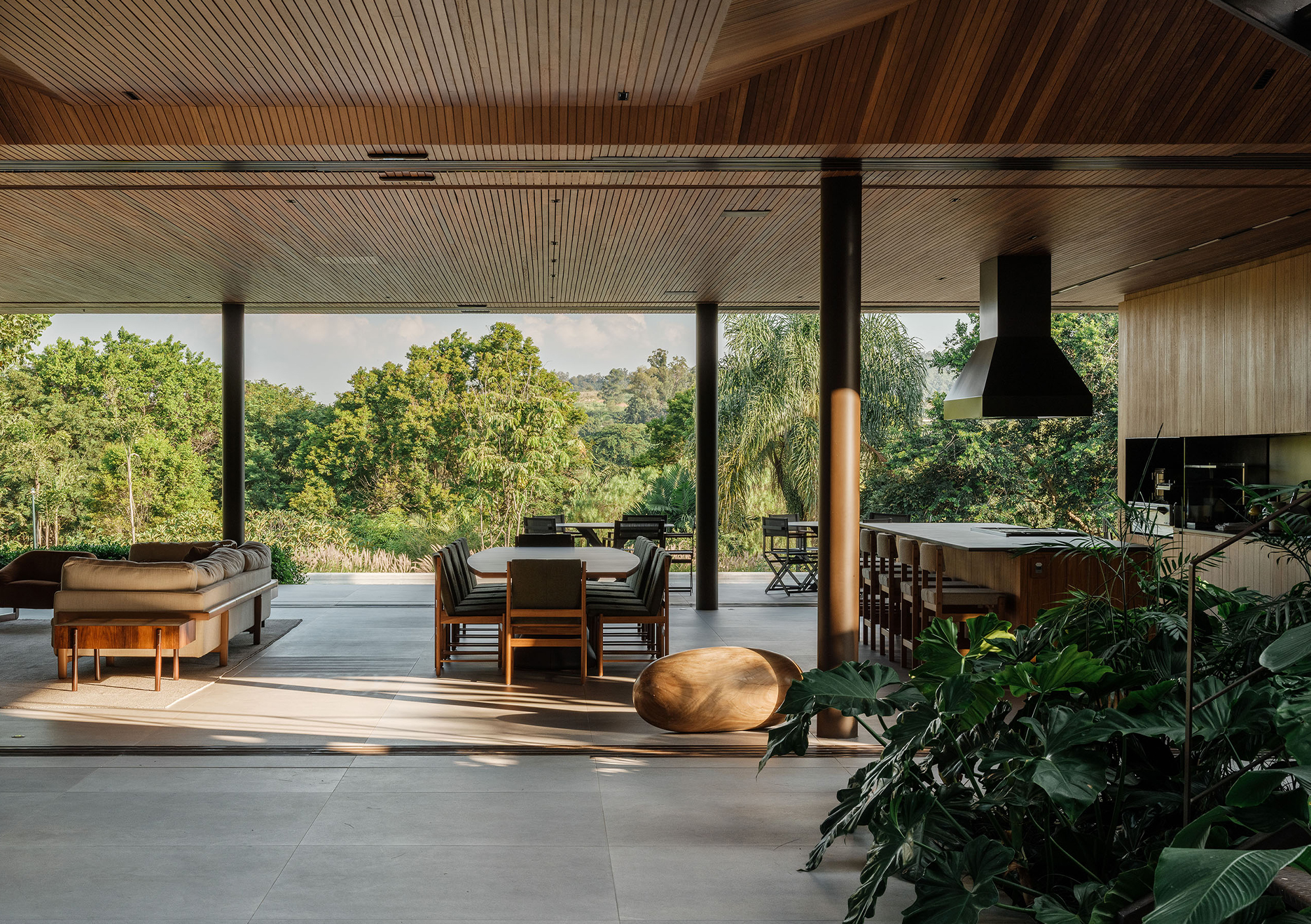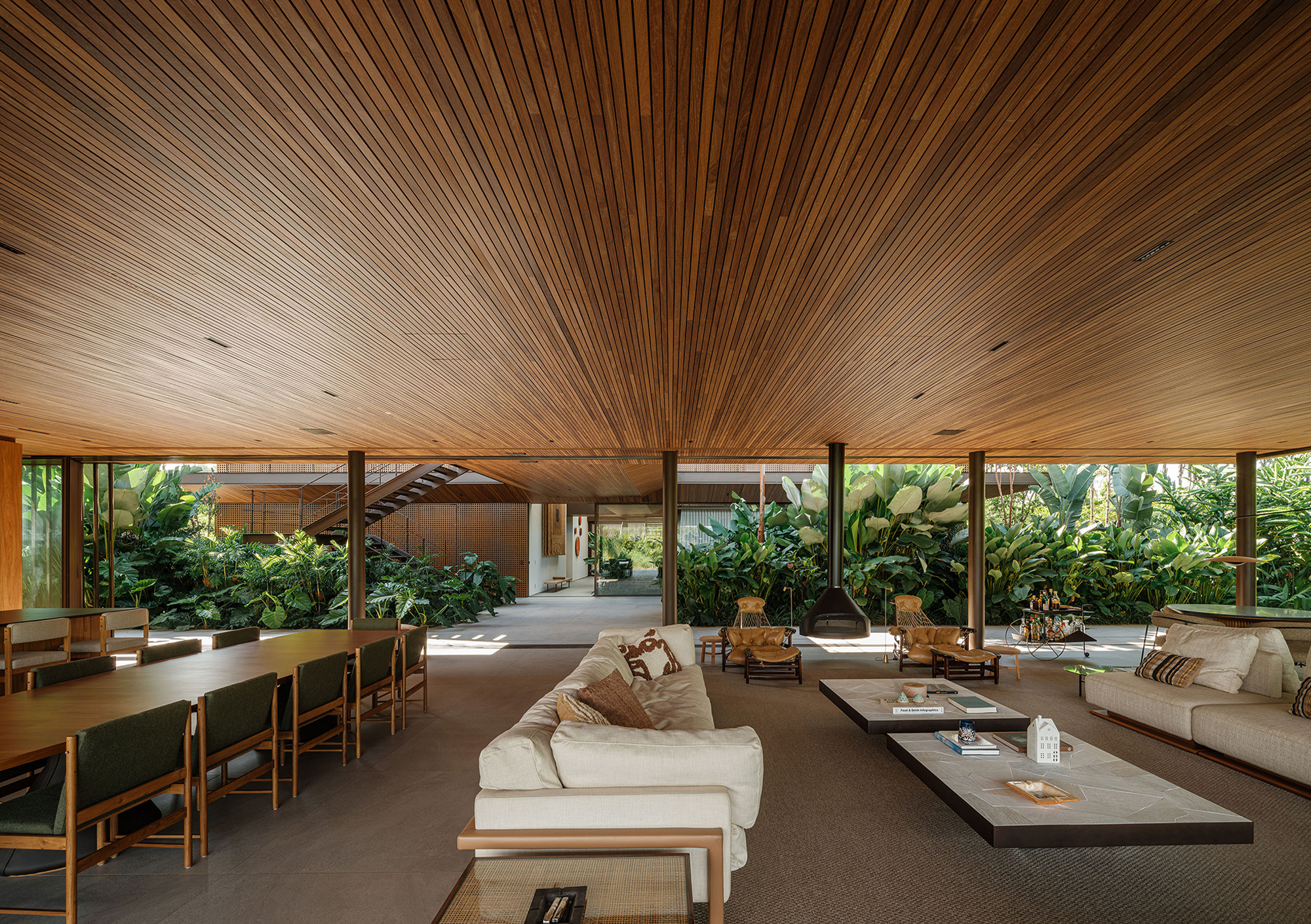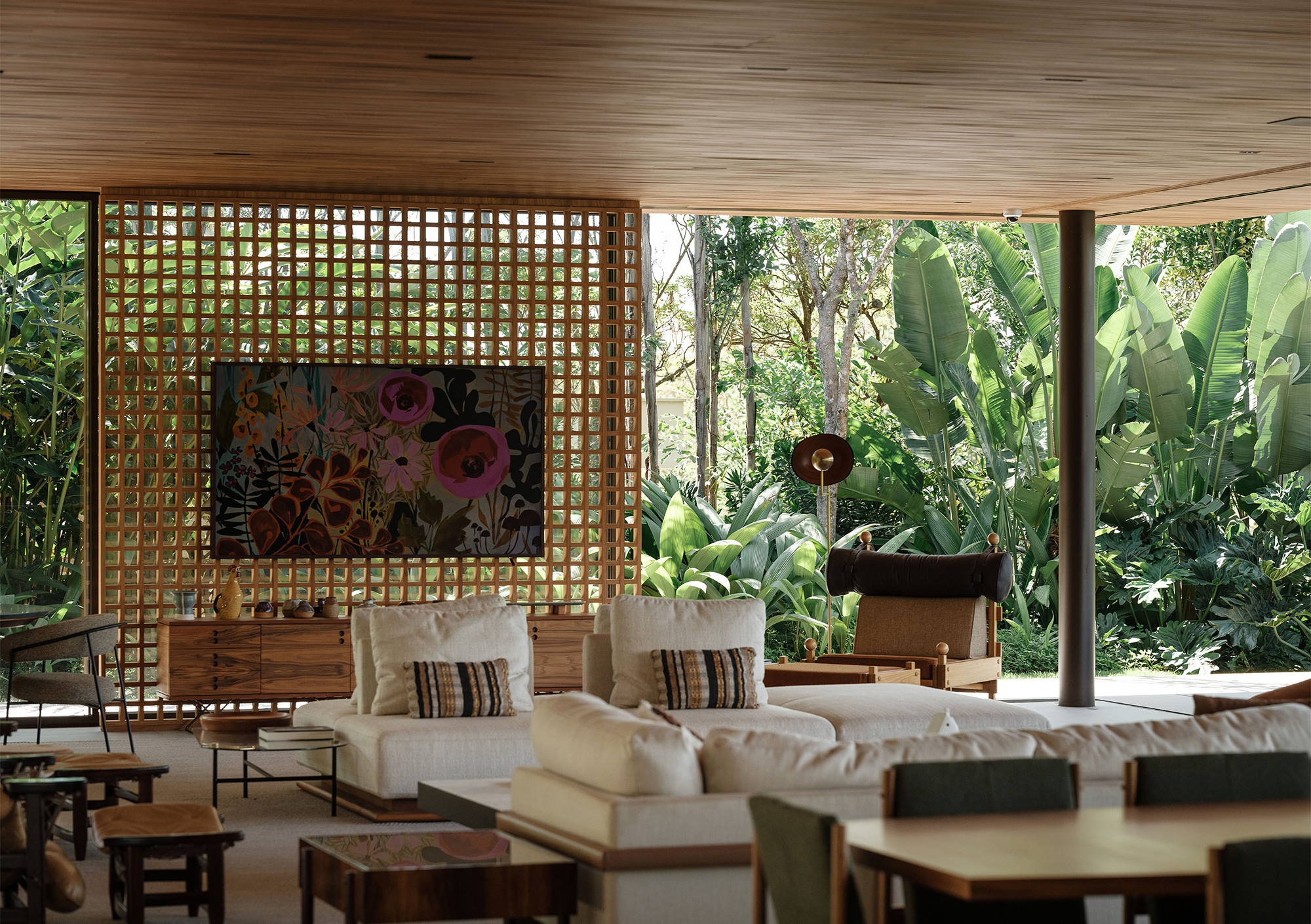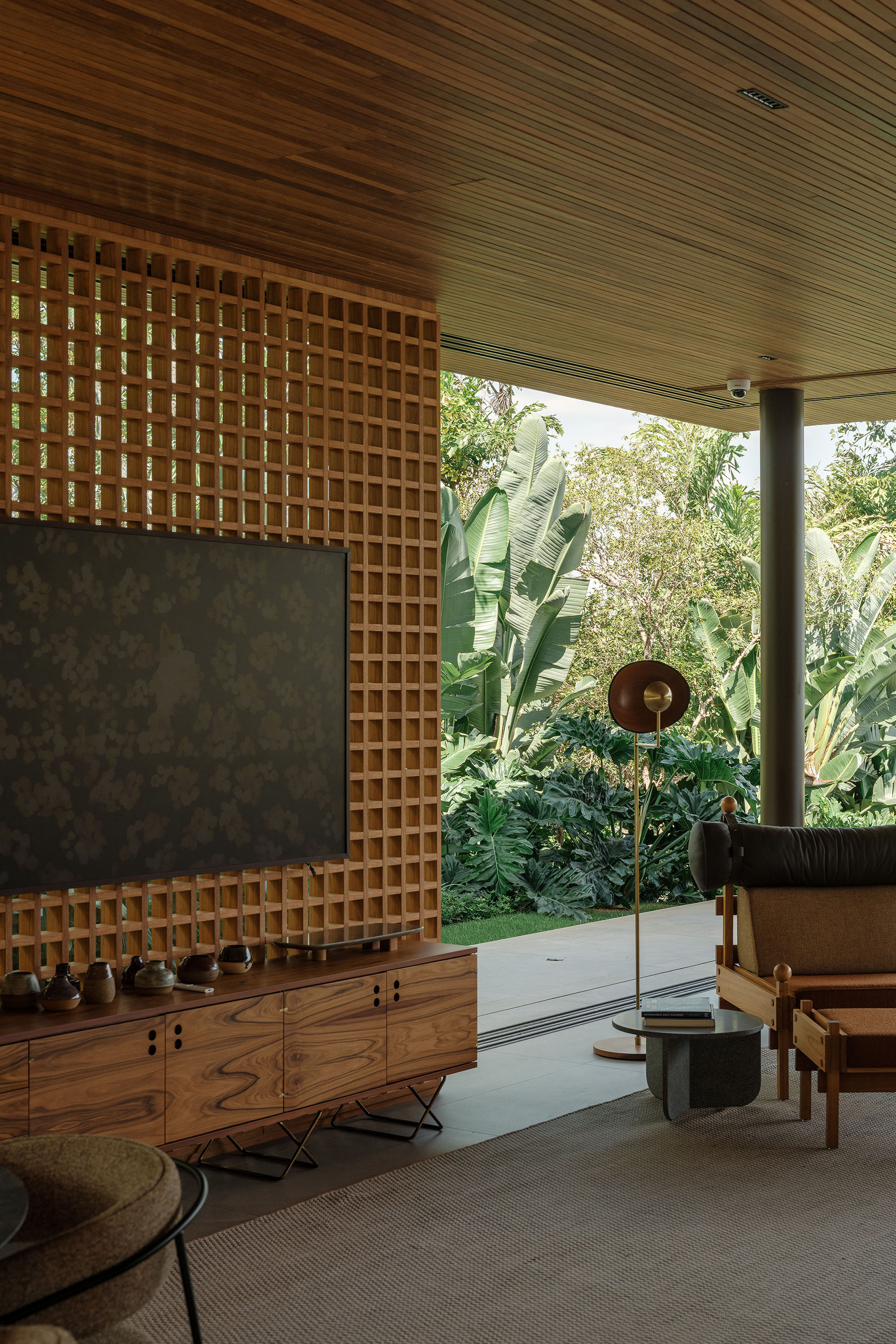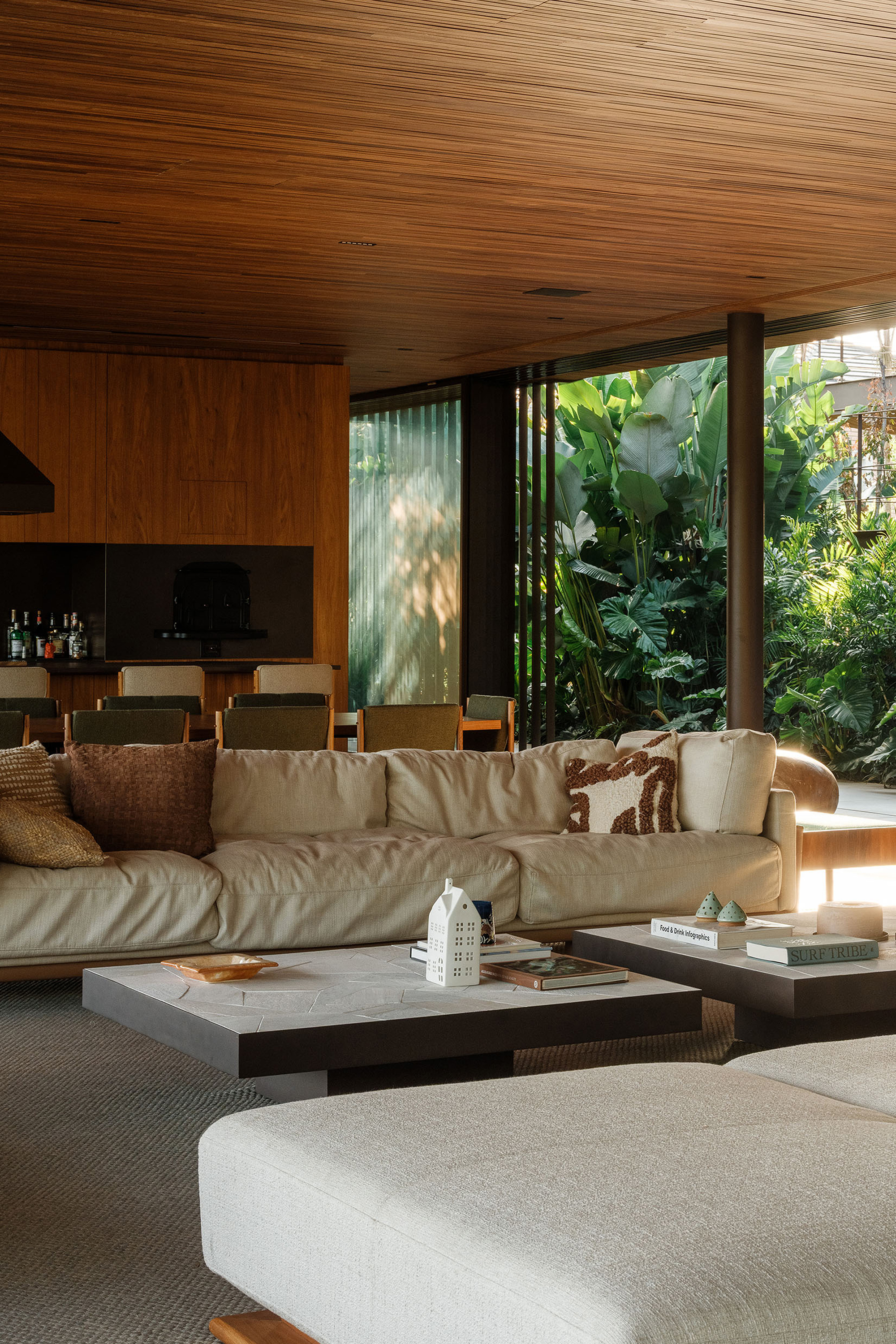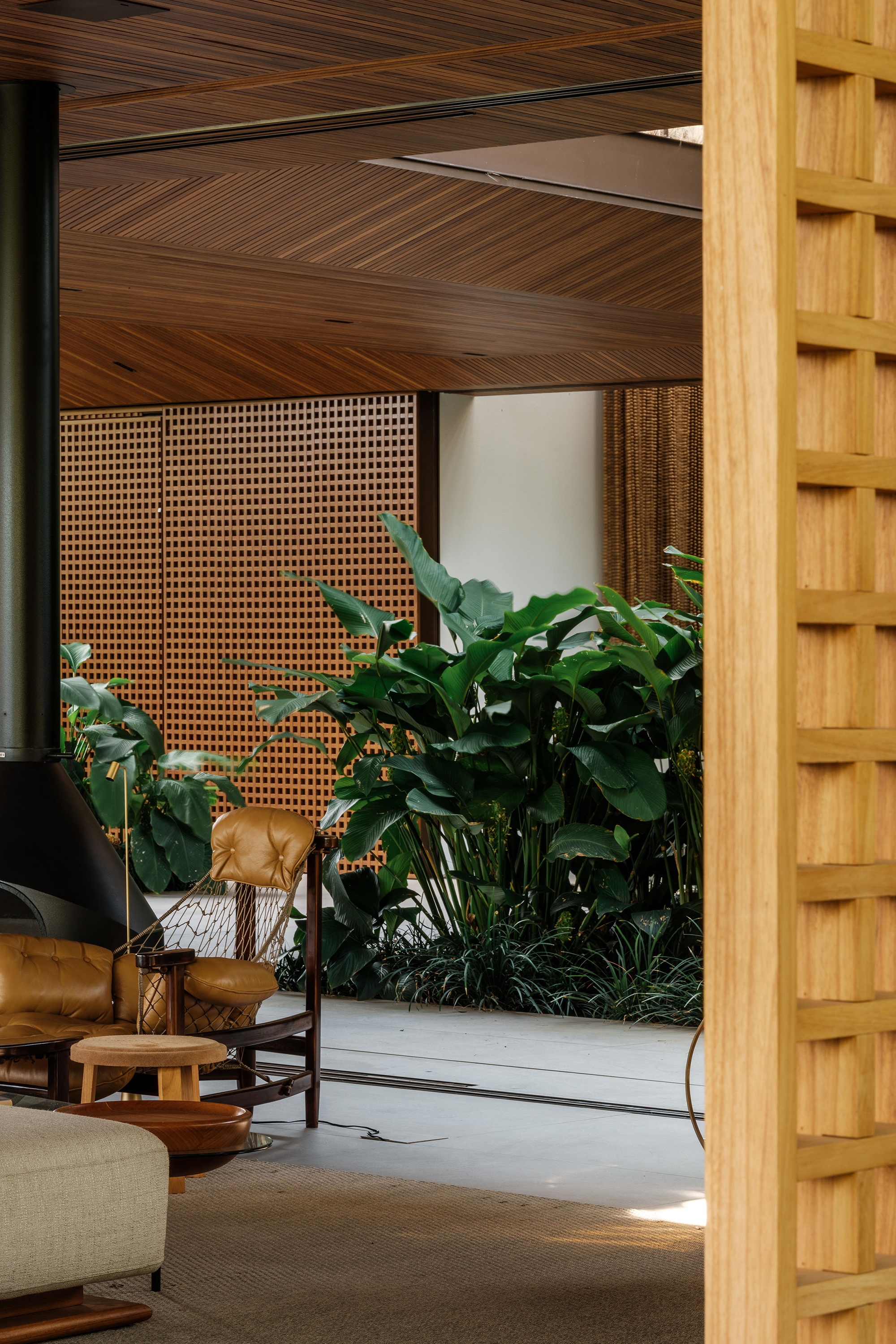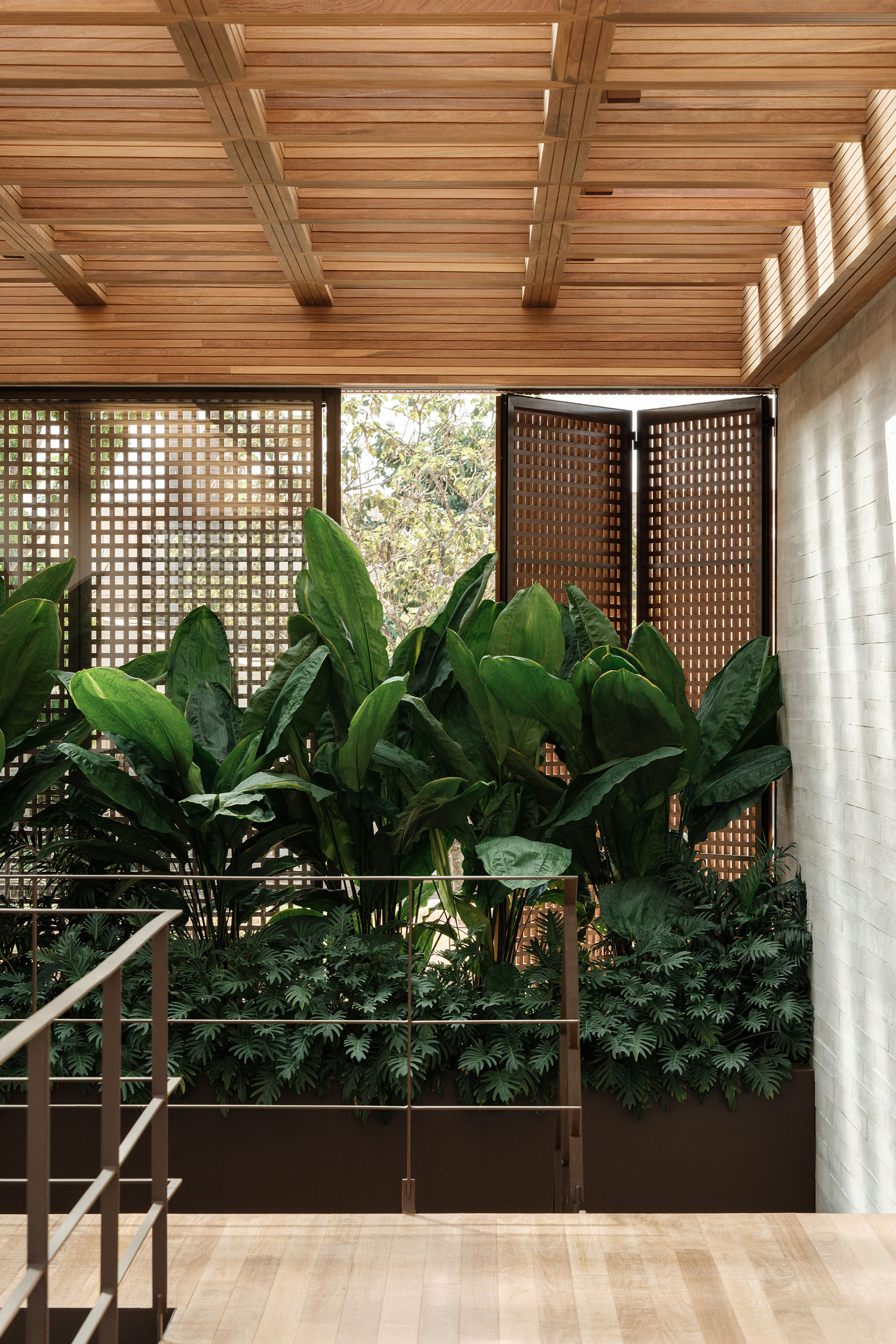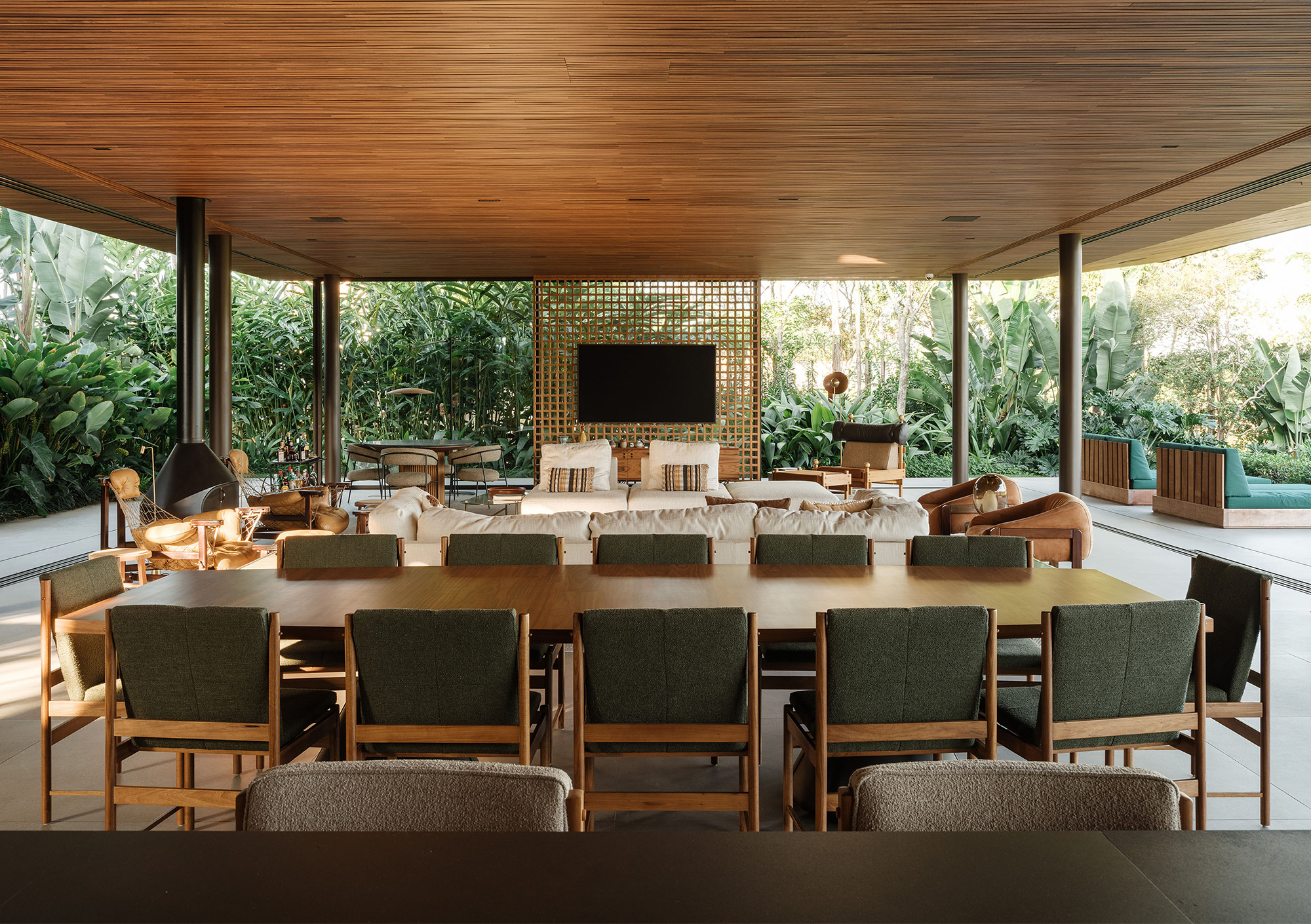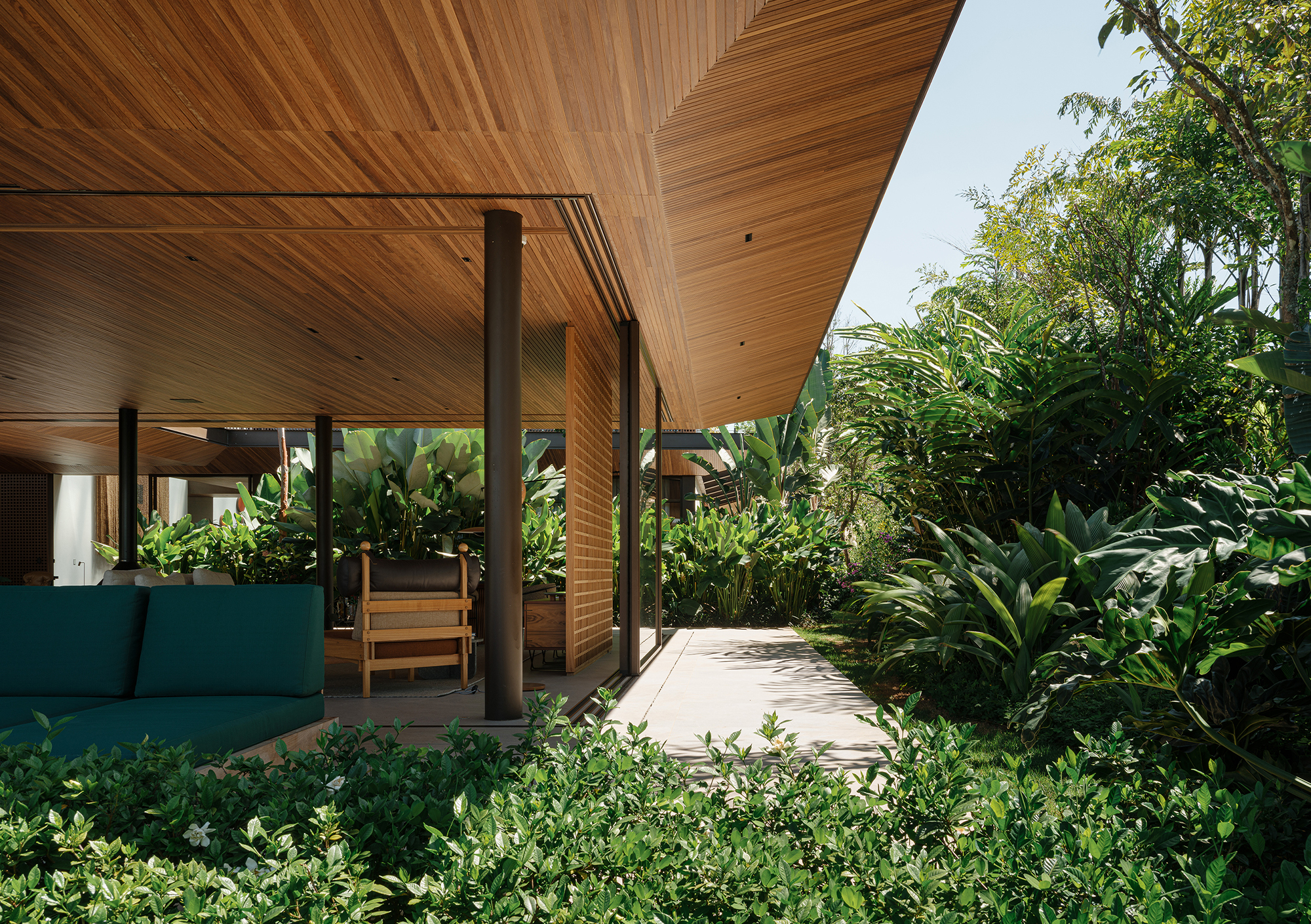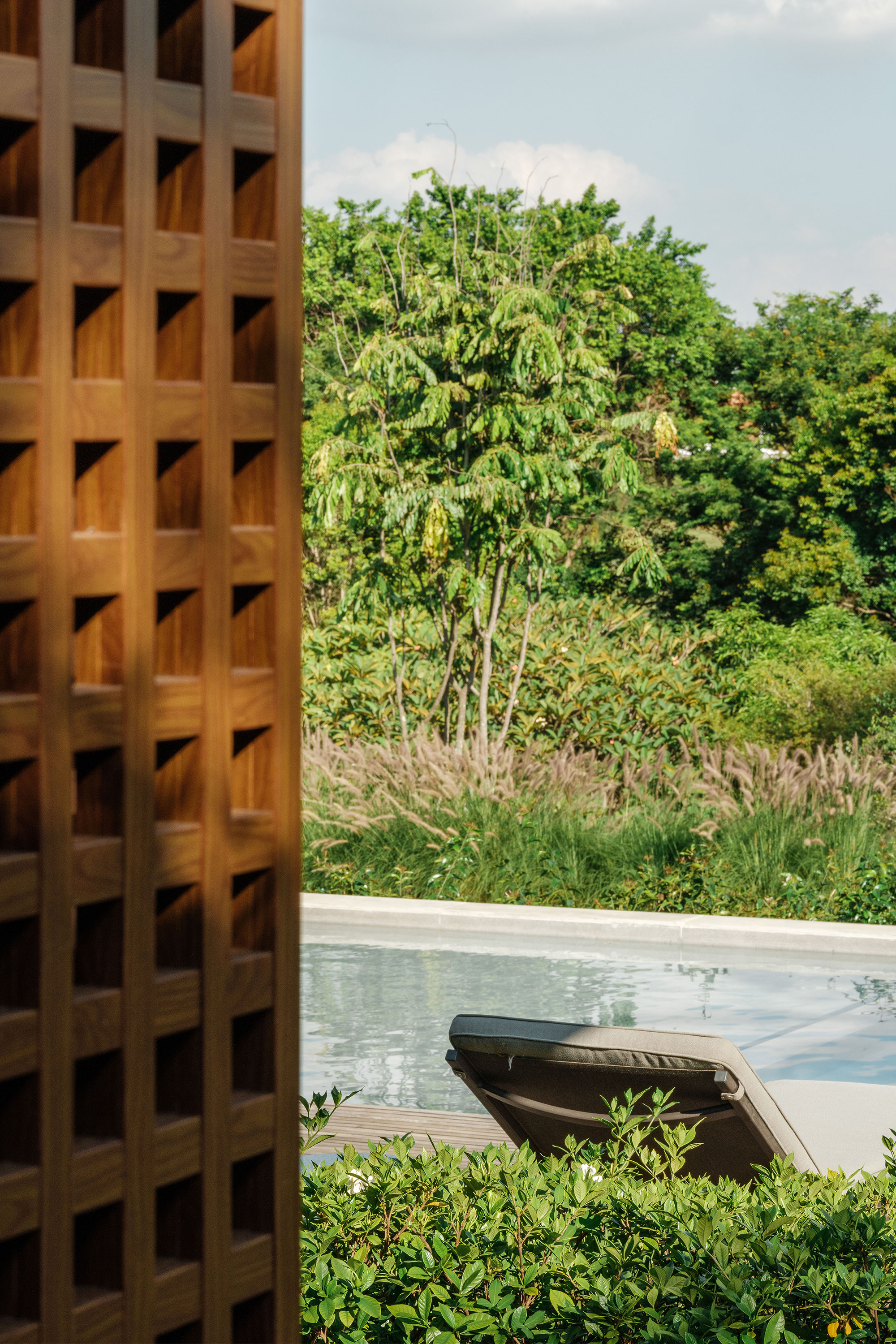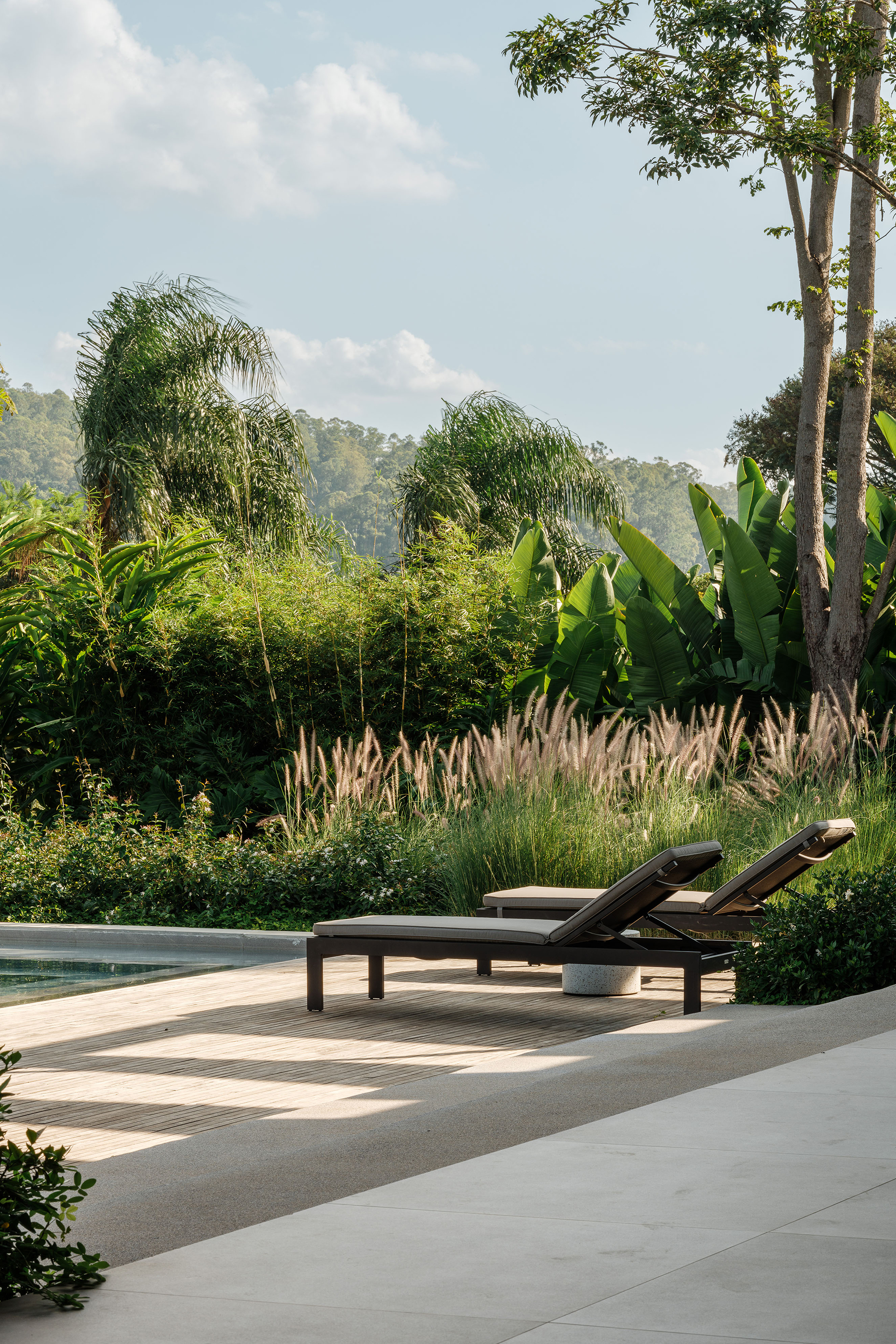Set within a residential condominium in Itupeva, in the countryside of São Paulo, House LGM was designed as a vacation retreat for a couple and their two young children. Set on a 3,125 m² plot, the 1,400 m² residence—designed by architect Luciano Dalla Marta—is organized into two main volumes: a two-story block for private and service areas, and a single-story block for social spaces. Positioned parallel to the gentle slope of the land, these volumes frame a central courtyard that houses the main vertical circulation of the house. This open void also allows for natural light and ventilation, while offering continuous visual integration with the surrounding vegetation.
Despite its size, the architecture does not impose itself on the landscape but integrates with it subtly and respectfully. This same approach guided the landscape design by Rodrigo Oliveira, who sought to blur the boundaries between built and natural environments. Here, the garden becomes an extension of the house: it flows through spaces, defines paths, awakens the senses, and deepens the connection with nature.
In the entrance gallery, a planting bed beneath the upper-floor walkway leads toward the living rooms, naturally lit by a skylight above. The landscaping features tropical, semi-shade species with broad, voluminous leaves—such as Goeppertia orbifolia (cyclanthus), Chamaedorea elegans (chamaedorea), and Thaumatophyllum xanadu (philodendron xanadu)—establishing an ambiance that echoes the double-height ceiling and mediates the scale between architecture and nature.
